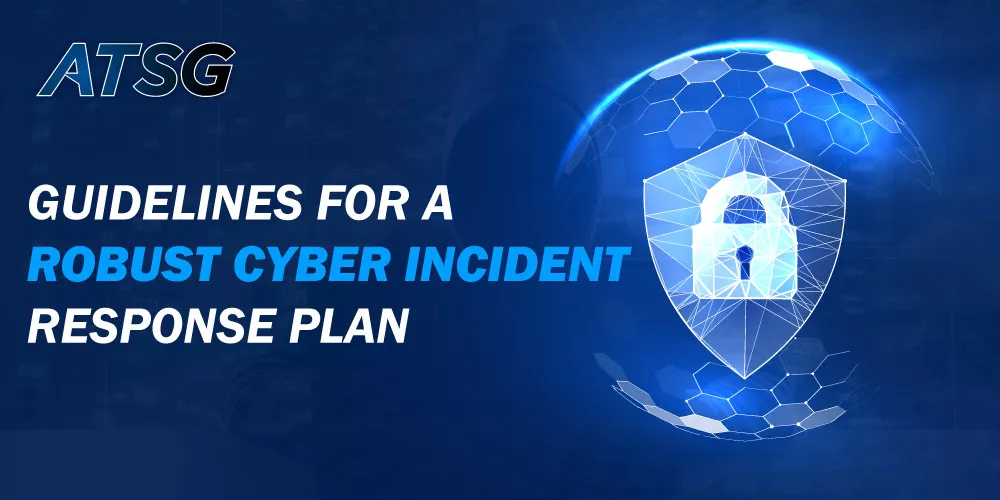At present, it is almost a “no-brainer” that businesses around the world need a robust cybersecurity mechanism to protect their IT infrastructures. This not only involves a proactive approach to halt cyberattacks, but an effective incident response plan is equally important, in preparing for the inevitable.
The stark reality of cybersecurity breaches is that they put enterprises under immense strain and pressure, often impeding good judgment. In such high-stress times, employees and business leaders alike, are not in their “right state of mind”, so as to make sound decisions.

1. Develop a Foundational Policy Document
The first and foremost step in any enterprise-wide incident response plan should be to develop a strategic and remediation policy. This policy must be approved by the enterprise’s top executives. It will give incident responders a guideline to make all the important decisions, and the aspects to prioritize. Businesses should remember that this policy document should consist of generic language so that it is easier for everyone to understand.
It is generally preferred that the primary responsibility of incident response is handed over to a designated senior leader. This person should be given full control to handle and guide employees to deal with a security breach, in a resilient and effective manner.
2. Assemble an Incident Response Team
Choosing one person to lead an incident response plan is only the first step, as this leader needs to have a team of experts to carry out the important tasks. Depending on the very nature and size of your enterprise, the scope and scale of your incident response team might vary.
For instance, a smaller enterprise will have a highly centralized team. On the other hand, the incident response team for a large multinational corporation will have dedicated personnel for various geographical locations.
Regardless of the team structure, the important thing to remember here is that your team members must have the required knowledge, training, and skillset to ensure they will do their bit in handling high-stress situation.
3. Create Playbooks
A standardized and basic procedural template, developed beforehand, can save your workforce a lot of time and effort. We say this because even though the magnitude or patterns of cybersecurity attacks might vary, the basic response mechanism remains the same. Therefore, a standardized response or playbook can be extremely beneficial.
For example, if an employee’s endpoint devices have been stolen, businesses can follow a general template procedure consisting of the following steps.
- Immediately wipe out all the data from that device, remotely.
- Ensure the encryption of that device.
- Get in touch with law enforcement agencies (LEA), to file a report for the missing device.
- Make sure the employee immediately gets a new device.
Playbooks having the most common incident responses can be a “game changer” to tackle security breaches. This way, the incident response team will not panic about what to do, every time there is an issue at hand.
4. Ensure Effective Communication
Whether it is with internal employees or external stakeholders, communication is key in incident response efforts. This way, all the employees will be informed about what exactly is it that is expected from them, during an active incident. For instance, incident response leaders must clearly communicate the following points to employees.
- The amount of information shared with external actors.
- Selected people contacting law enforcement agencies, on time.
- The extent and nature of information shared with the authorities.
This step is important for businesses that want to avoid adverse publicity.
5. Evaluate, Learn Lessons, and Repeat
Even though the present cybersecurity attacks have become a lot stealthier, yet they present huge learning opportunities for businesses. A good incident response plan must have a mechanism to evaluate an enterprise’s progress and see what lessons were learned during this period.
Enterprises can also hold sessions for all the substantial stakeholders involved in the process, to identify any gaps in the incident response plan. This will not only help them further improve their incident response but also diminish the likelihood of such attacks in the future.
Conclusion
No business wants to go through the “nightmare” of a cybersecurity attack disrupting the IT environment. However, cyber security incidents have unfortunately become a reality. It is highly advisable for enterprises to develop a well-designed plan, in advance, instead of making hasty decisions in a “pressure cooker environment”, once the incident has already occurred.
These proactive incident response plans enable businesses to minimize the damages associated with security breaches and help businesses get things “back on track”, in the least amount of time.
Contact ATSG for managed IT services and intelligent technology solutions portfolio. ATSG, along with its recent acquisition of a notable cybersecurity player, Xentaurs, might just have the best security solutions your business needs to elevate its cybersecurity posture.
The comprehensive Managed Detection and Response (MDR) solutions by Xentaurs will help your enterprise quickly detect anomalies or incidents related to cybersecurity, by quickly raising red flags. The scope of our MDR capabilities extends to your enterprise’s processes, IT infrastructure, policies, workloads, and even more.




